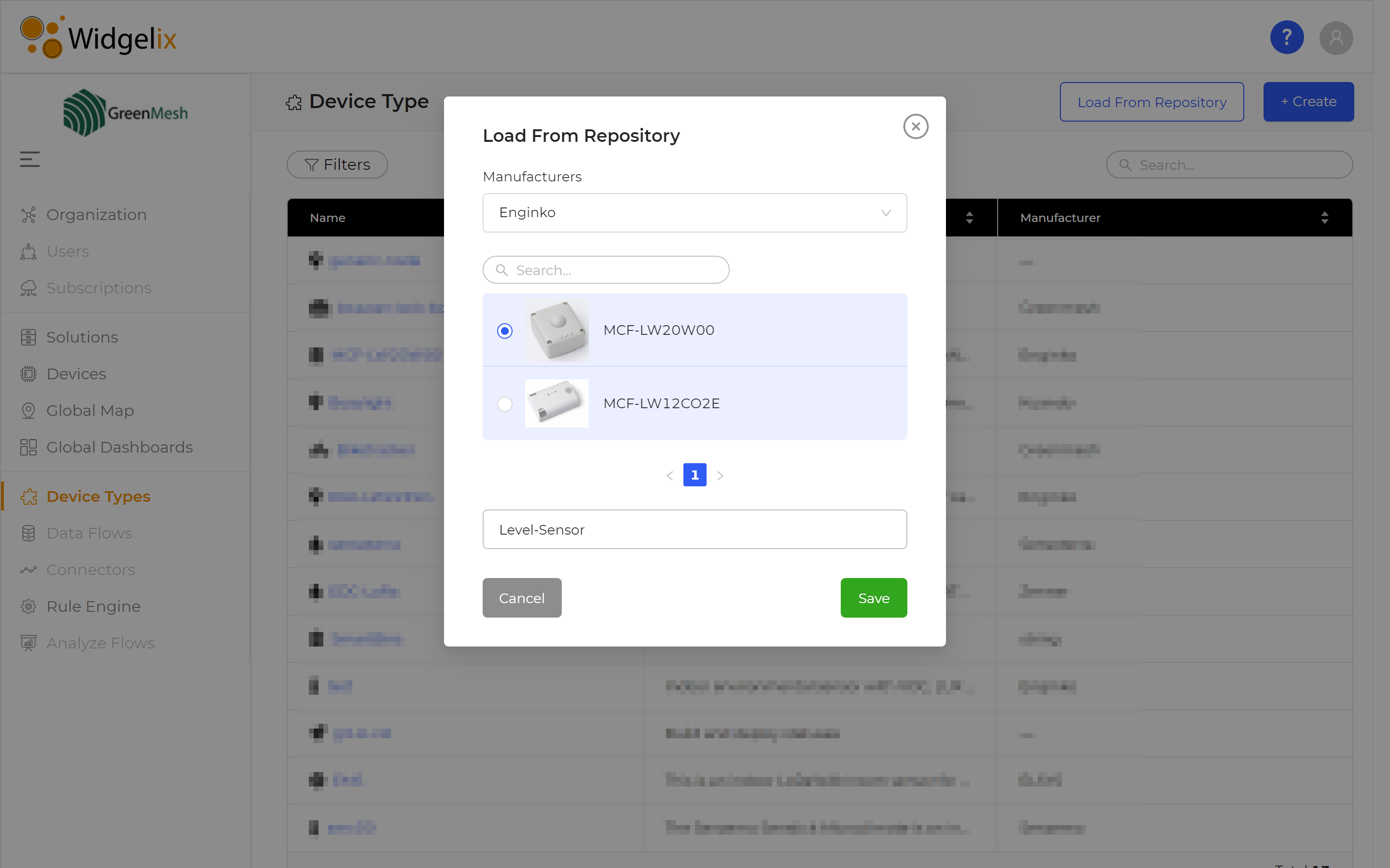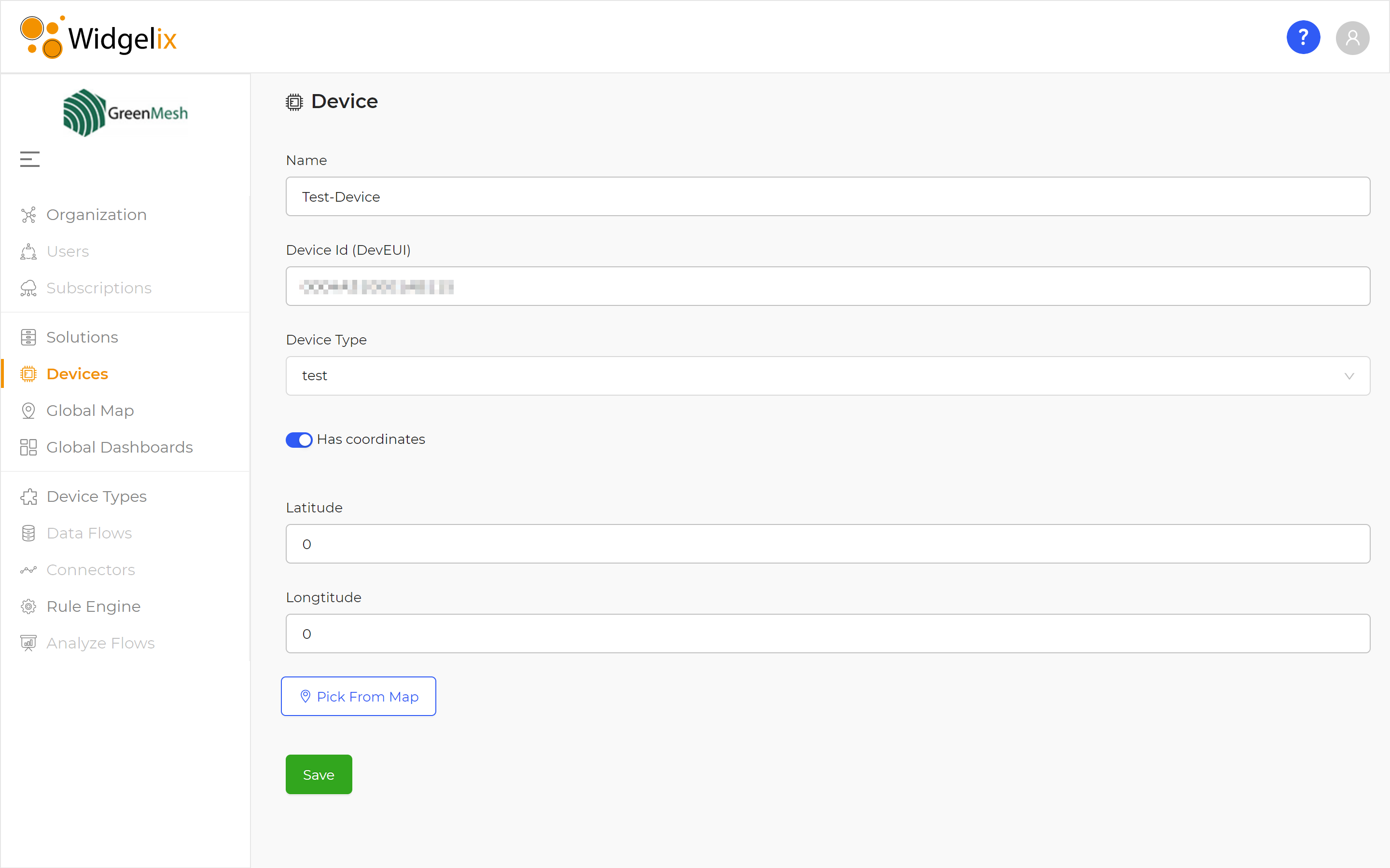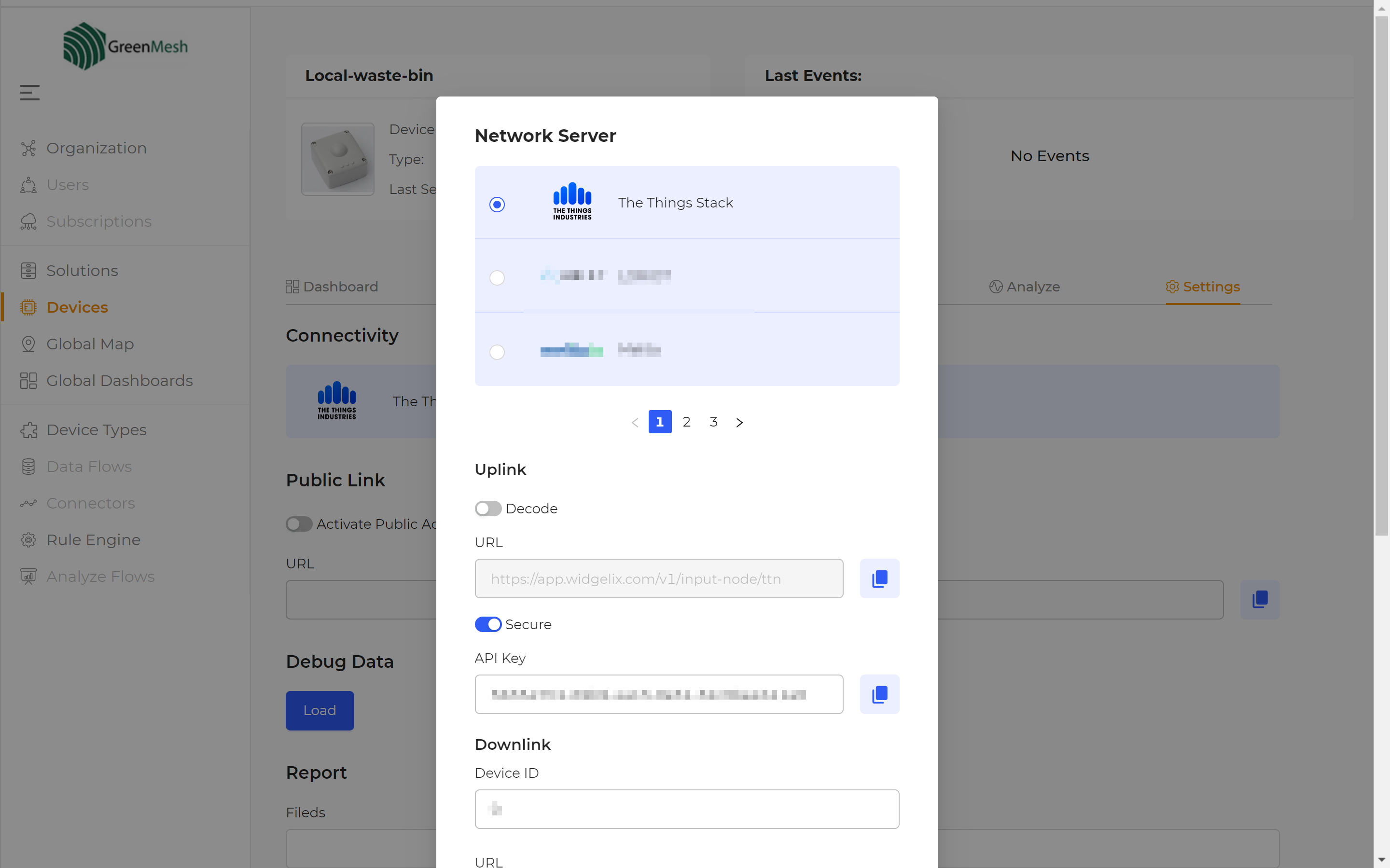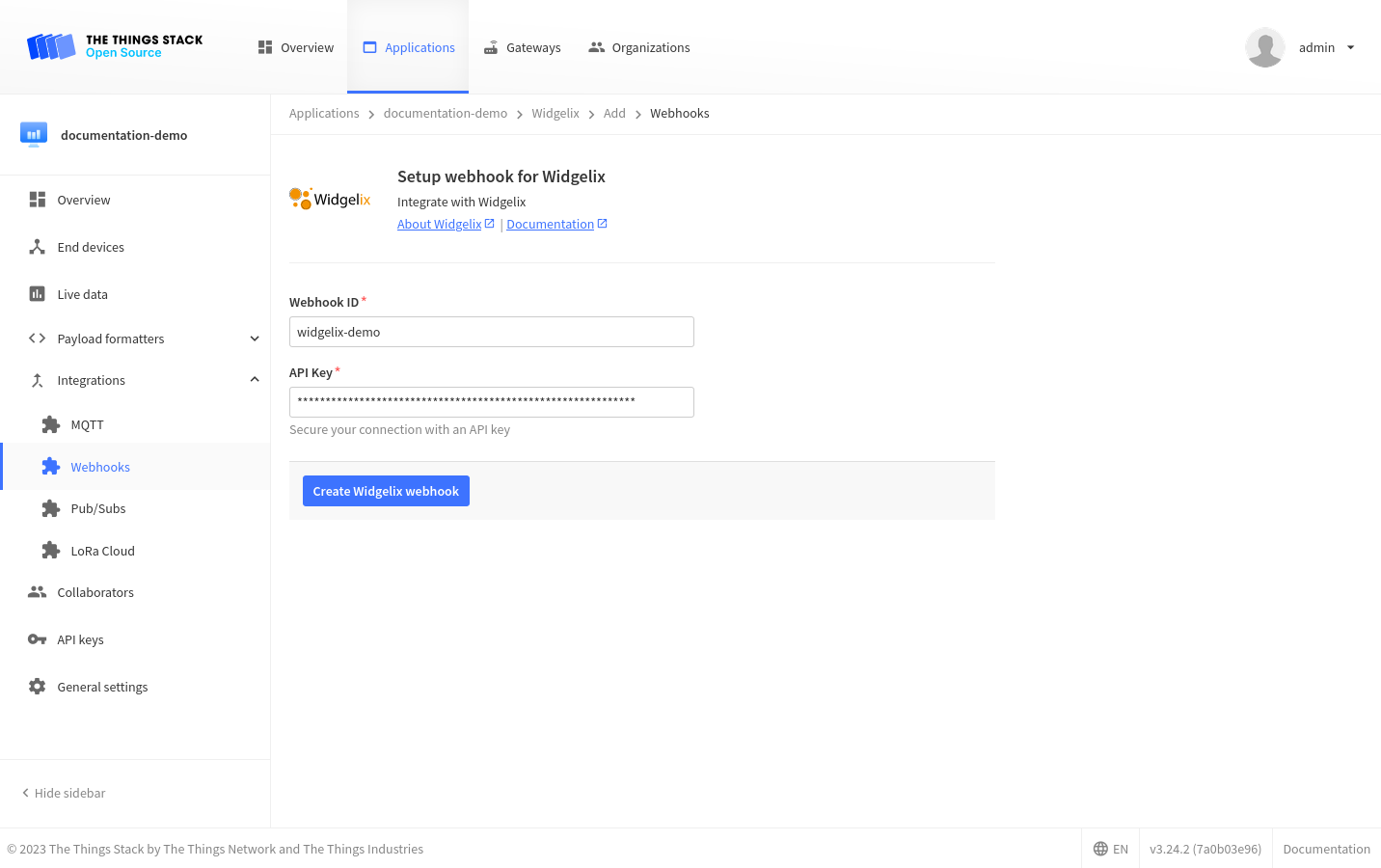Widgelix is a powerful and flexible deep analytics cloud service for IoT device management and data visualization. Widgelix platform allows you to easily integrate devices from various manufacturers into a single platform, making it easier to manage your IoT network and extract valuable insights from your collected data. With Widgelix, you can optimize your device performance, improve your decision-making, and drive business growth.
Prerequisites
Setup Widgelix
Create a device template from Repository
Navigate to Device Types on the left hand menu, then click the Load From Repository button.
Select required device, give a Name to your template and click Save button.

Add new device based on the template
Navigate to Devices on the left hand menu, then click the Create Device button.
Give a Name to your device, type DevEUI, assign previously created Device Type template and click Save button.

Configure Connectivity
Navigate to Devices on the left hand menu, then click on the created device.
Go to Settings tab and click on Connectivity section. Then select The Things Stack, switch Secure option. And finally, copy the given API Key because you’ll need it in the next step.

Configure The Things Stack
Now you are ready to instantiate the Widgelix Webhook template. This will allow you to forward data from your The Things Stack device to Widgelix.
On The Things Stack, navigate to Integrations → Webhooks and choose Widgelix Webhook template.
Give a Webhook ID to your integration. Fill the API Key with value you previously copied from Widgelix.

Congrats, Widgelix is now ready to accept your device’s uplinks! Navigate back to Devices on Widgelix, click on your device and you will be able to observe all the incoming data from your device.
